Plant Focus: Helleborus
Winter flowering perennial to brighten up the colder months
Helleborus is a genus of around 20 perennials in the plant family Ranunculaceae, alongside other plants, including Anemone, Delphinium, and Clematis. Native to Europe and Asia, Helleborus has nodding, cup-shaped, downward-facing flowers on sturdy stems, in a range of colours, including white, purple, pink, and near-black. Some varieties also feature a pretty speckled pattern, and others boast double sepals. Helleborus has delicate, evergreen, deep green foliage that provides year-round interest and colour; some varieties boast marbled foliage. It’s generally a low growing plant, with most species reaching around 0.3-0.8m in height.
Commonly known as Christmas rose or Lenten rose, Helleborus is a low maintenance planting option that is ideal for brightening up landscapes during the bleaker period of the year, when many other plants aren’t in flower. Depending on the species, Helleborus blooms from around November to early spring and is a valuable source of nectar and pollen for early bumblebees. Its downward facing flowers help to protect the pollen during wet weather, and also offers protection to feeding insects.
Most hellebore species are unscented, whilst Helleborus foetidus, or commonly known as stinking hellebore, gives off an unpleasant scent when crushed. Helleborus usually prefers a sheltered position in dappled shade, in a well-drained soil. Ideal for informal planting schemes, such as cottage and woodland gardens, it is usually planted towards the front of borders, where it can also underplant shrubs or trees. Planting it in
groups and combining with early-flowering spring bulbs, such as daffodils, snowdrops, or crocus, gives a lovely effect.
Key Characteristics:
✓ Evergreen perennial
✓ Nodding, cup-shaped flowers in a range of colours
✓ Deep green or marbled foliage
✓ Height varies from 0.3-0.8m
✓ Thrives in sheltered, dappled shade
✓ Low maintenance
✓ Ideal for planting in the front of borders
✓ Flowers from November to early spring
✓ Attracts early pollinators
Fun fact:
Instead of petals, Helleborus has sepals; this showy part of the flower is usually longer lasting and extends its period of interest.
Species and varieties of Helleborus
Helleborus argutifolius
An evergreen herbaceous perennial with sea green, prickly foliage and long-lasting, bowl-shaped, pale green flowers from January to March. Its striking foliage provides year-round interest. Ideal for a mixed border in full sun or partial shade.
Helleborus foetidus
A compact native perennial that has nodding, pale green flowers from January to April, with dark green, deeply divided foliage. Commonly known as stinking hellebore, as its foliage gives off a foul scent if crushed. Provides great architectural structure.
Helleborus niger
Commonly known as Christmas rose, Helleborus niger is a low growing semi-evergreen perennial with leathery, lobed, dark green leaves and sturdy stems bearing white or pink flushed flowers from January to February. Ideal for a partially shaded position.
Helleborus orientalis
A clump-forming perennial with leathery, divided leaves and nodding, saucer-shaped flowers in pink, white, green, or purple, depending on the variety. It thrives in sun or partial shade and well-drained soil, providing early-season interest with its long-lasting blooms. Lovely for planting beneath trees.
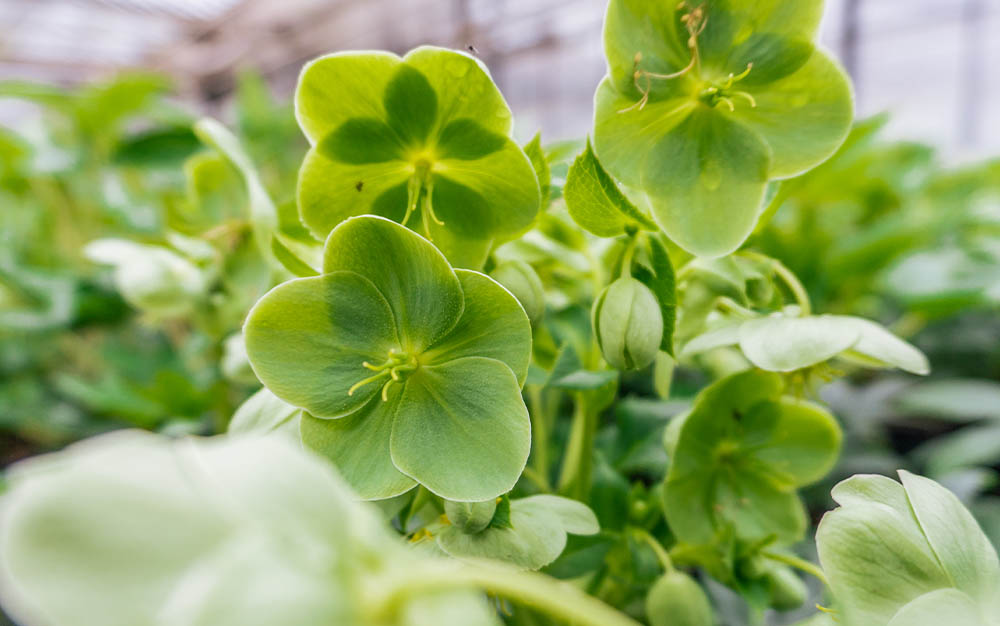
Helleborus argutifolius
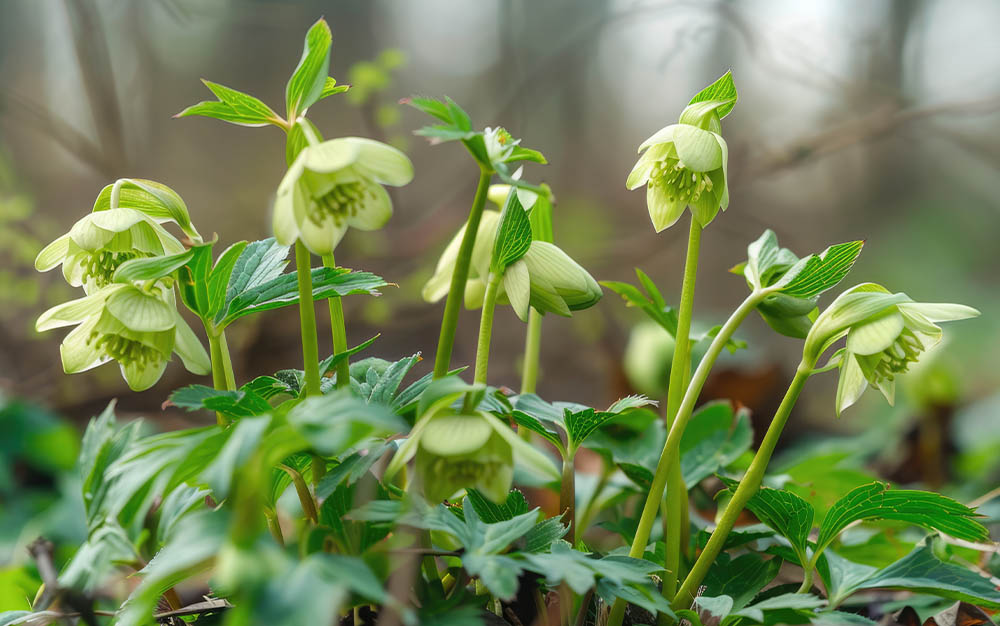
Helleborus foetidus
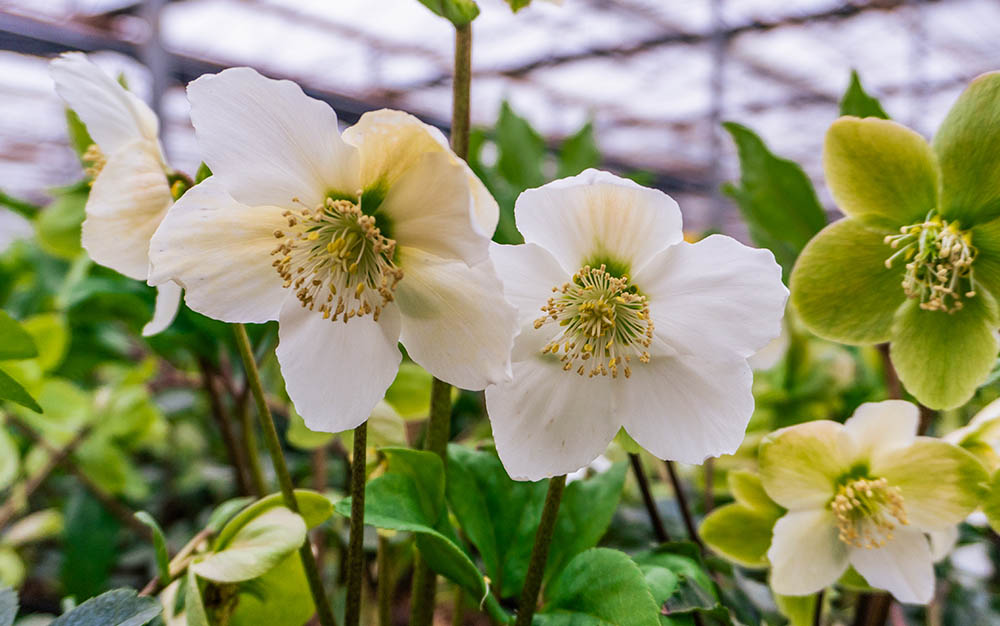
Helleborus niger
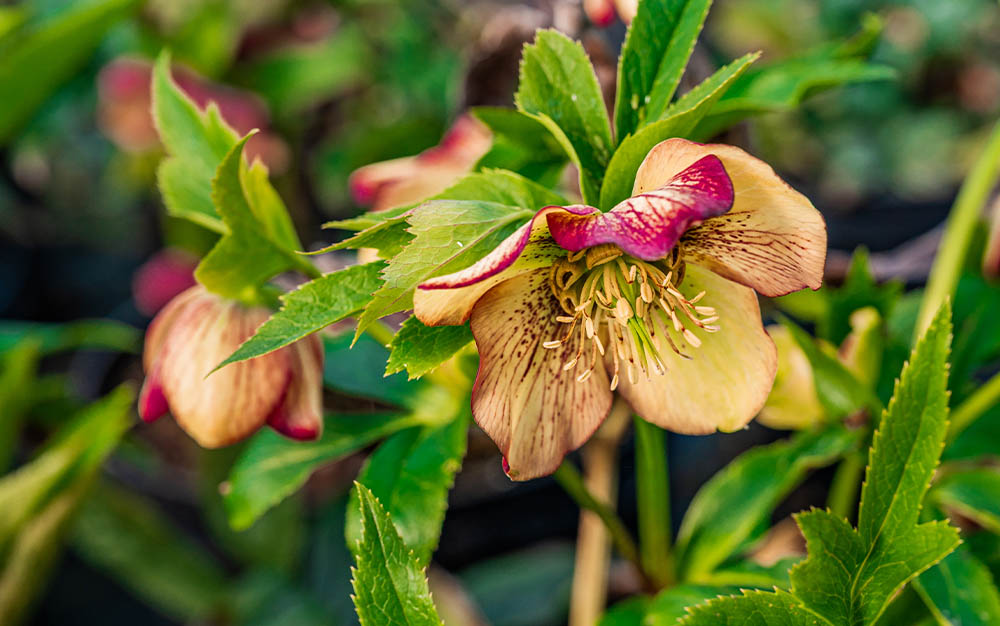
Helleborus orientalis
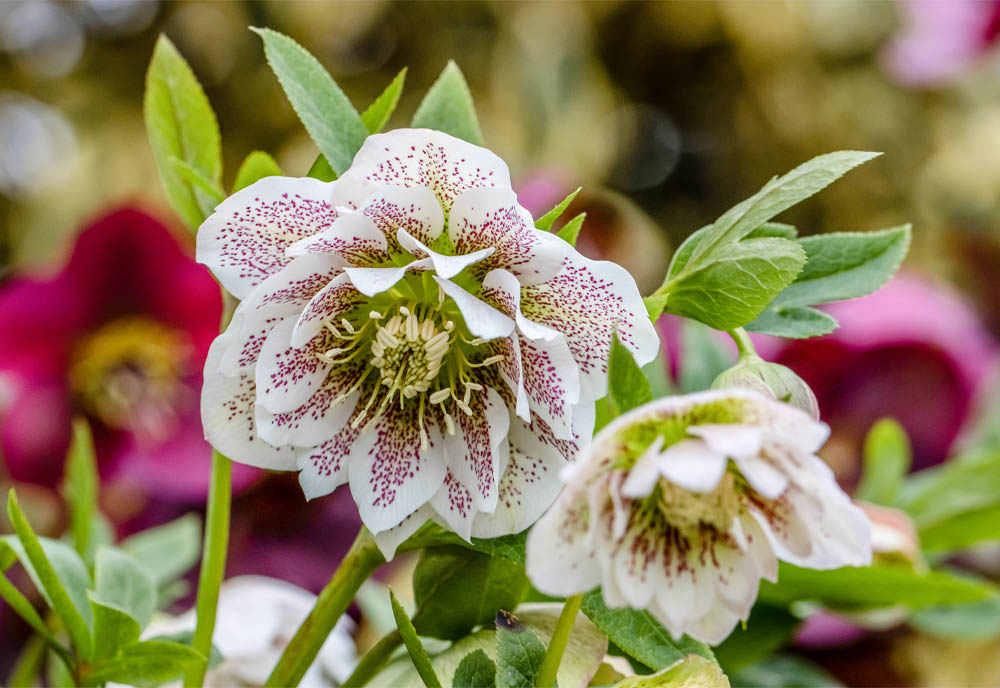
Helleborus × hybridus ‘Harvington Double Cream Speckled’
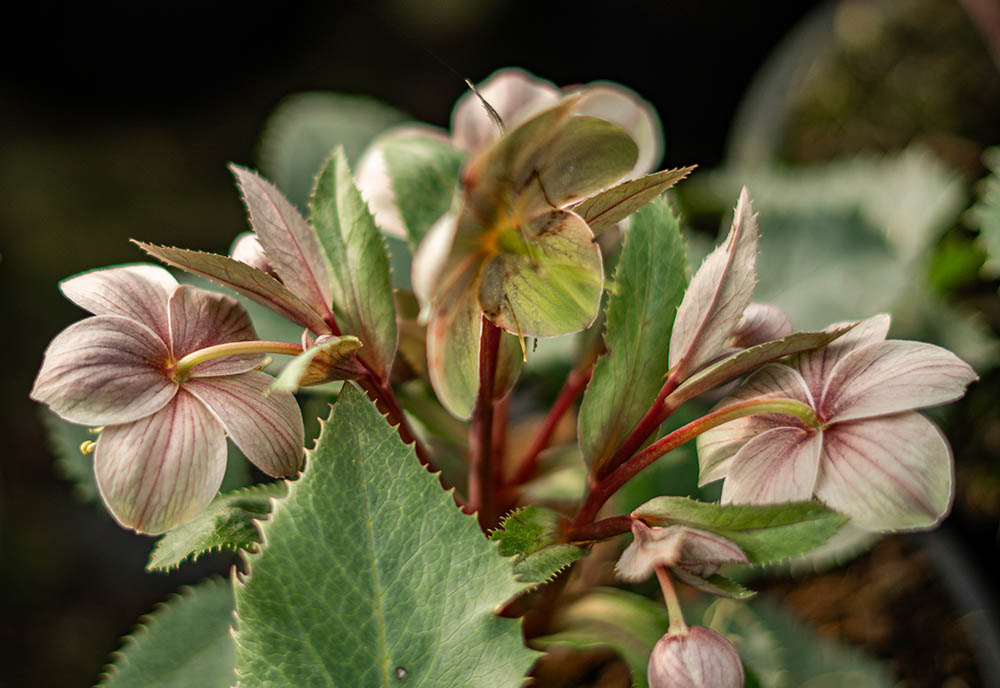
Helleborus × sternii
Helleborus × hybridus
Also known as Helleborus orientalis, Helleborus × hybridus is a clump-forming perennial that produces nodding, saucer-shaped flowers from February to April, in different colours, including green, purple, and pink, depending on the variety. Commonly known as Lenten rose, it’s ideal for groundcover in partial shade or for underplanting trees.
Helleborus × hybridus ‘Harvington Black’
A striking Harvington variety that boasts nodding, almost black flowers from late winter to early spring with purple-flushed green foliage. Well suited to woodland gardens alongside contrasting plants such as snowdrops.
Helleborus × hybridus ‘Harvington Double Cream Speckled’
A clump-forming perennial with mid-green foliage and double, cup-shaped cream-white flowers with a speckled maroon detail. Ideal for dappled or fully shaded borders with well-drained soil.
Helleborus × hybridus ‘Harvington Smokey Blues’
A clump-forming evergreen perennial that has dark green foliage with double, deep purple to black flowers with creamy yellow centres from February. This variety thrives in dappled shade, so is well suited to underplanting trees and shrubs.
Helleborus × sternii
A clump-forming perennial that has clusters of nodding, purple-tinted cream-green flowers from February to April, with pink-purple leaves. This eye-catching species looks fantastic planted in groups and thrives in full sun to partial shade.
How to grow and care for Helleborus
Helleborus is generally a low maintenance plant and thrives with very little attention. The best time of year to plant is autumn to spring, and it needs a fertile, well-drained soil; soil that is waterlogged should be avoided. In terms of positioning, in the front of a border, underplanting trees and shrubs, is ideal for Helleborus. Most prefer a sheltered position in dappled shade, but some species and varieties can handle other light levels, such as Helleborus argutifolius and Helleborus foetidus, that can both cope with full sun. Helleborus can be planted in both the ground or in containers.
Helleborus doesn’t need a lot of pruning, but the previous year’s foliage can be cut back when new foliage emerges. It can be mulched annually with biodegradable mulch, such as compost or wood chippings. This will help it to retain moisture and prevent weeds.
Once established, Helleborus is fairly drought tolerant. Weekly watering is sufficient until signs of growth are apparent; from this point it can be watered during dry spells.
Pests and diseases that affect Helleborus
Helleborus is generally not affected by pests or diseases. However, there are some fungal infections and pests that may occasionally become a problem.
Hellebore aphid
Hellebore aphids are white-green insects that are found on foliage and flowers of hellebores. Most active in spring, these pests leave a sugary honeydew on leaf surfaces and this can lead to sooty mould — a sign of an infestation. To keep infestations under control, natural predators, like ladybird larvae, can be encouraged to green spaces.
Hellebore leaf miner
Hellebore leaf mining fly was first discovered in Britain in 1999; its larvae tunnel inside the foliage of Helleborus foetidus, causing brown-black blotches to appear. They are most active from August until March, and they are usually controlled by natural enemies, including parasitoid wasps.
Slugs and snails
Slugs and snails are commonly found in UK gardens, and can be a nuisance as they feed on plants, with some species eating seedlings and soft leaves, resulting in unsightly holes within plant foliage. Encourage predators, such as birds, hedgehogs, and frogs into your green space to keep slug and snail populations under control.
Hellebore black death
In recent years, a new disease of Helleborus has been discovered, known as hellebore black death. Caused by Helleborus net necrosis virus, it stunts plant growth and causes black streaking and lesions on foliage. This disease is most active from mid-spring to summer. If hellebore black death is discovered, infected plants should be dug up and destroyed.
If you would like more information on the Helleborus species and varieties we sell, get in touch with the G Team.

